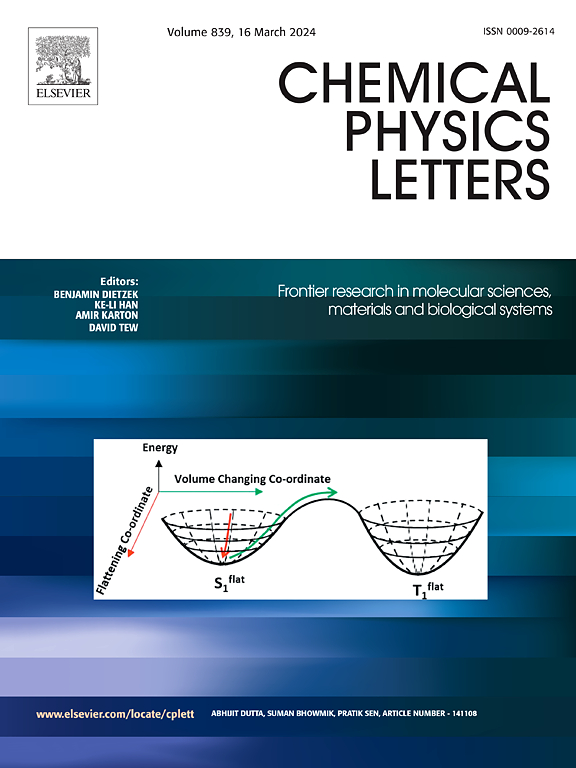Comparison of the basic properties of bio-based hydrocarbon liquids and mineral oils: A molecular dynamics structure and physicochemical properties synergistic Analysiss
IF 2.8
3区 化学
Q3 CHEMISTRY, PHYSICAL
引用次数: 0
Abstract
The research and development of environmentally friendly insulating liquids with high biodegradability is a key direction for future advancements. This paper investigates the feasibility of using bio-based hydrocarbon liquids (C18-isoalkanes and C22-isoalkanes) as an alternative insulating fluid to mineral oil, with a focus on how molecular structure influences their basic properties. Using 25# mineral oil as a reference, the variation patterns and differences in the microscopic parameters of two isoalkanes at different temperatures were studied through molecular dynamics simulations. The study explores the mechanisms by which the molecular structure of isoalkanes and mineral oil affect their macroscopic properties. The results show that, compared to mineral oil, isoalkanes exhibit unique molecular arrangements and spatial ductility, making them advantageous in terms of cohesive energy density, free volume, self-diffusion coefficient, dipole moment, and static dielectric constant. Test results indicate that, except for the pour point of C18-isoalkanes, the parameters of other isoalkanes meet or exceed the requirements set by the IEC 60296:2020 standard, suggesting that isoalkanes could be directly applied to existing transformers without modifying the transformer structure. C22-isoalkanes, in particular, offer advantages such as higher flash point, lower pour point, high biodegradation rate, and low dielectric loss, making them promising candidates as a substitute for mineral oil in insulating applications. This paper provides both theoretical guidance and data support for the application of isoalkanes as an environmentally friendly insulating liquid
生物基烃类液体与矿物油基本性质的比较:分子动力学结构与理化性质的协同分析
研究和开发具有高生物降解性的环境友好型绝缘液体是未来发展的关键方向。本文研究了生物基烃类液体(c18 -异烷烃和c22 -异烷烃)作为矿物油替代绝缘流体的可行性,重点研究了分子结构对其基本性质的影响。以25#矿物油为参考,通过分子动力学模拟研究了两种异烷烃在不同温度下的微观参数变化规律和差异。研究了异烷烃和矿物油的分子结构对其宏观性质的影响机制。结果表明,与矿物油相比,异烷烃具有独特的分子排列和空间延展性,使其在内聚能密度、自由体积、自扩散系数、偶极矩和静态介电常数等方面具有优势。试验结果表明,除c18 -异烷烃的倾点外,其他异烷烃的参数均达到或超过IEC 60296:2020标准的要求,表明异烷烃可直接应用于现有变压器,无需改变变压器结构。特别是c22 -异烷烃,具有闪点高、倾点低、生物降解率高、介质损耗低等优点,在绝缘应用中具有替代矿物油的良好前景。本文为异烷烃作为环保绝缘液的应用提供了理论指导和数据支持
本文章由计算机程序翻译,如有差异,请以英文原文为准。
求助全文
约1分钟内获得全文
求助全文
来源期刊

Chemical Physics Letters
化学-物理:原子、分子和化学物理
CiteScore
5.70
自引率
3.60%
发文量
798
审稿时长
33 days
期刊介绍:
Chemical Physics Letters has an open access mirror journal, Chemical Physics Letters: X, sharing the same aims and scope, editorial team, submission system and rigorous peer review.
Chemical Physics Letters publishes brief reports on molecules, interfaces, condensed phases, nanomaterials and nanostructures, polymers, biomolecular systems, and energy conversion and storage.
Criteria for publication are quality, urgency and impact. Further, experimental results reported in the journal have direct relevance for theory, and theoretical developments or non-routine computations relate directly to experiment. Manuscripts must satisfy these criteria and should not be minor extensions of previous work.
 求助内容:
求助内容: 应助结果提醒方式:
应助结果提醒方式:


